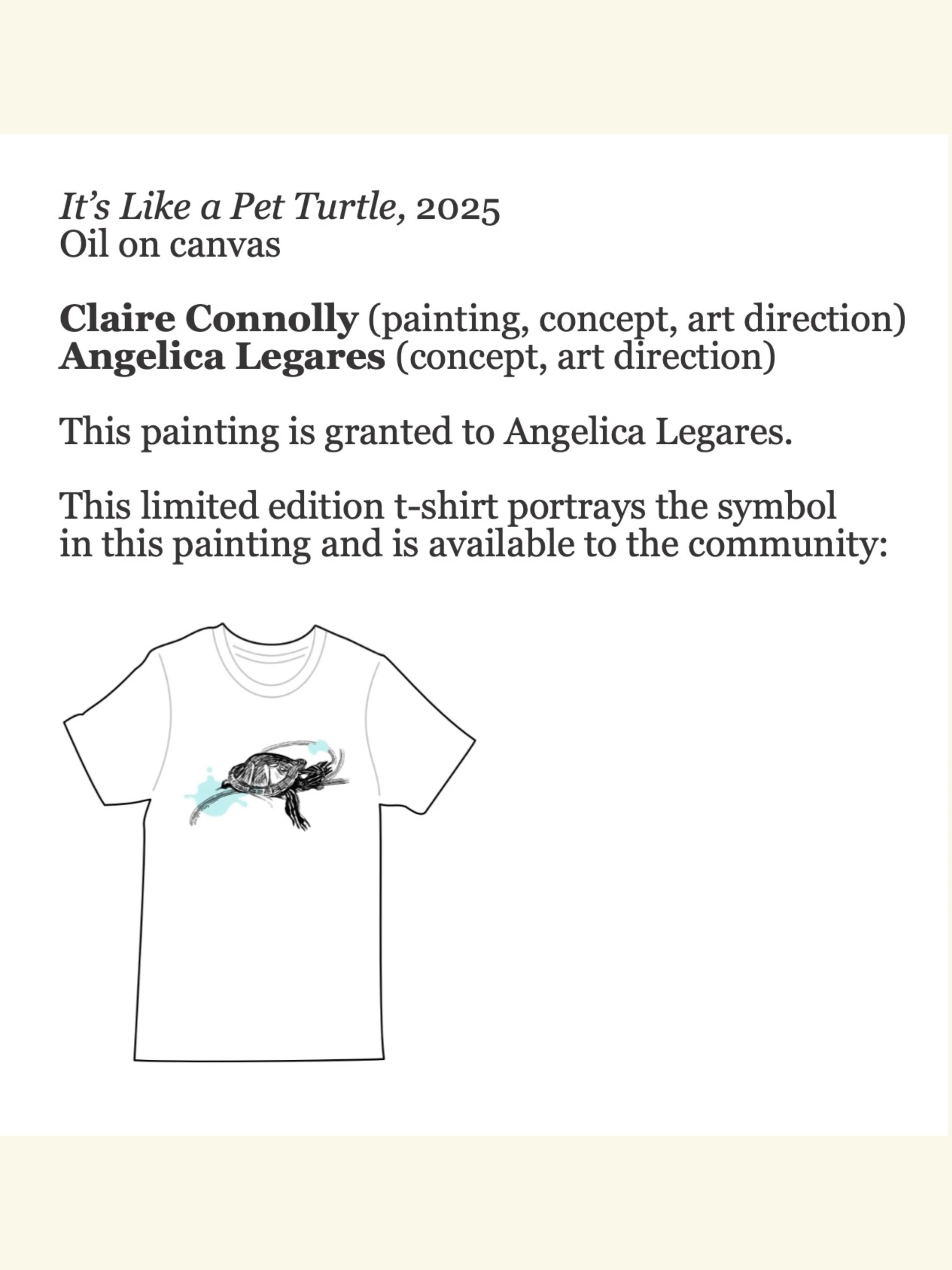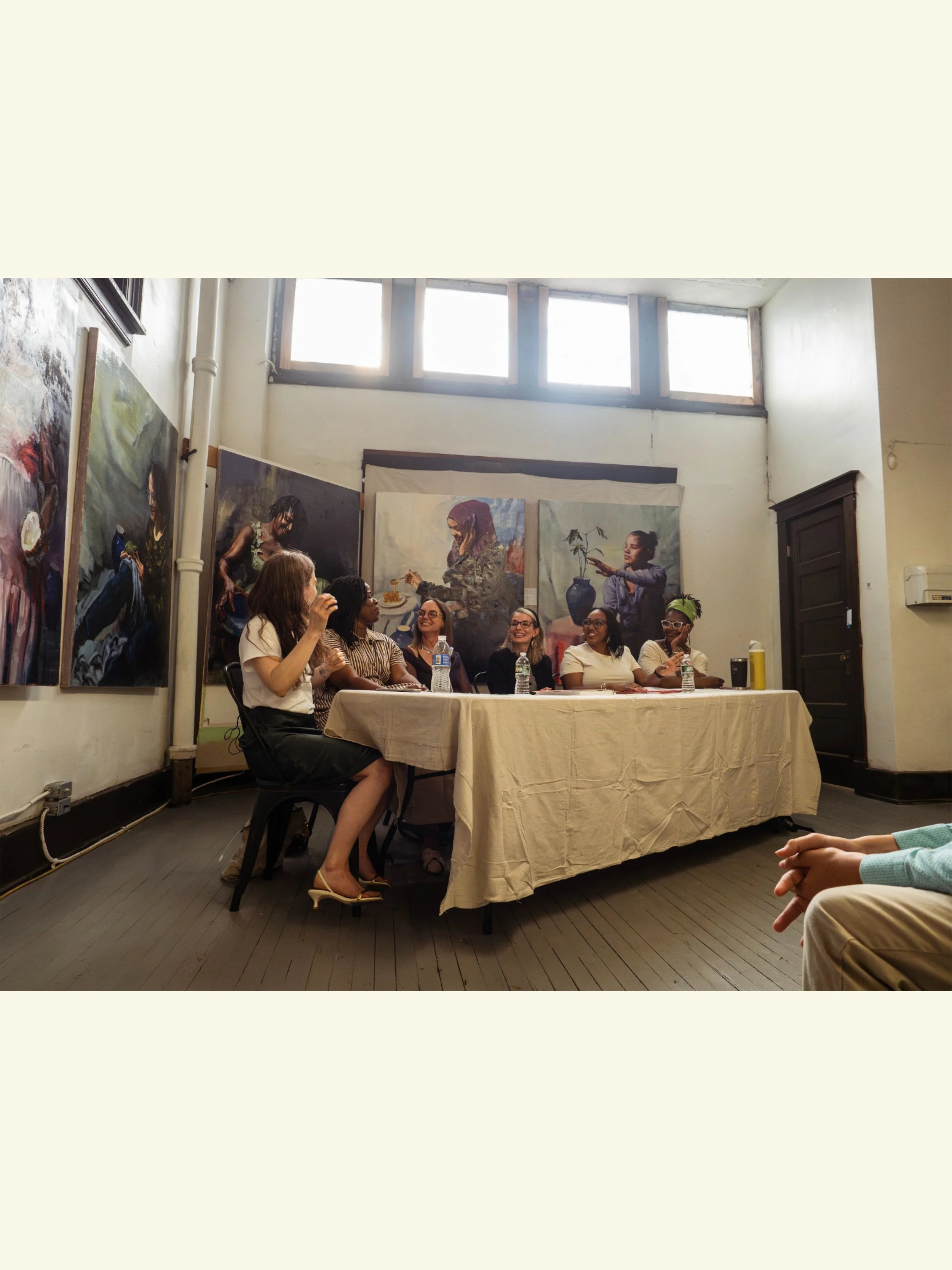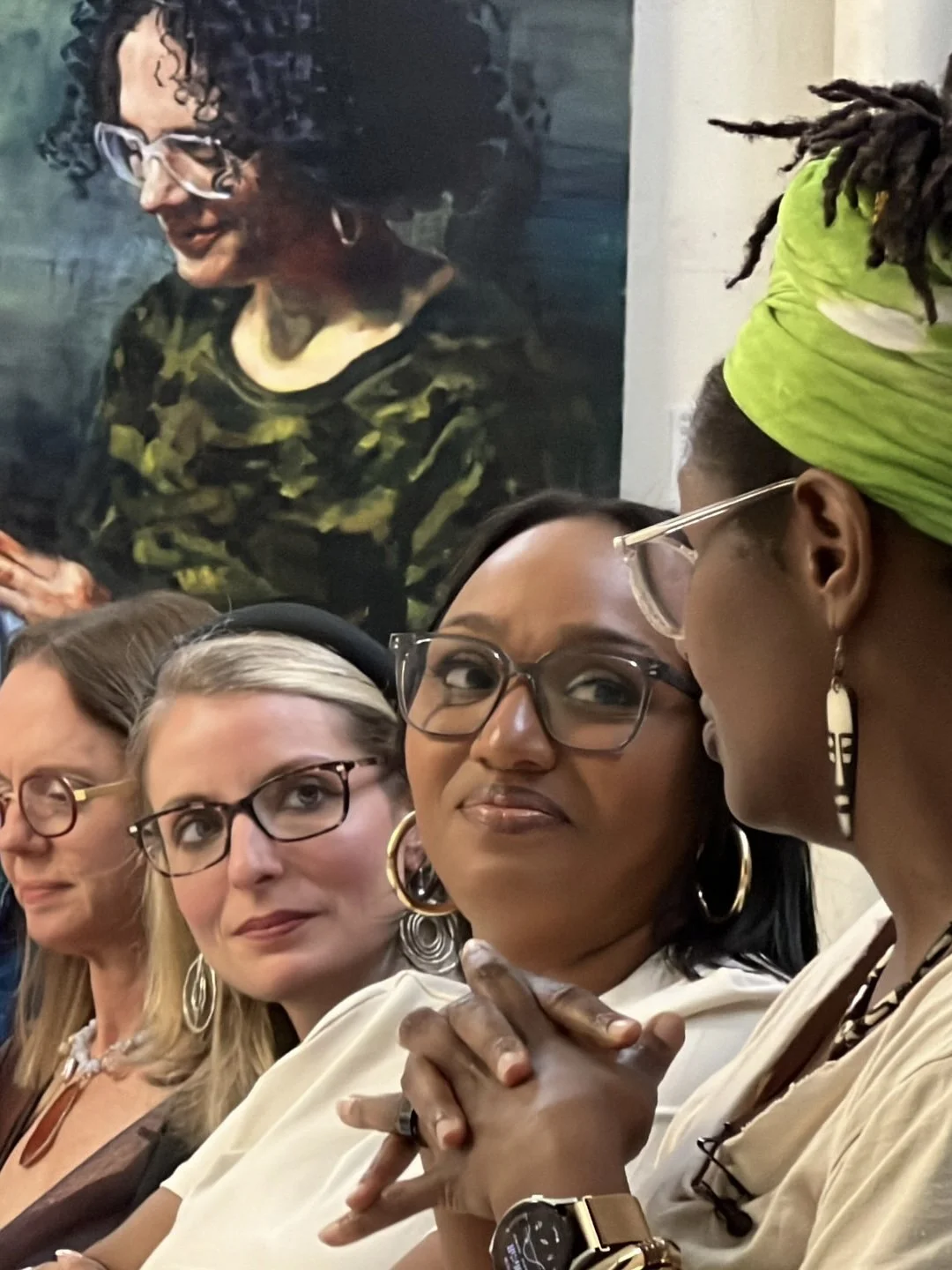Paintings and t-shirts photographed by Nancy J. Parisi. Scenes photographed by Kaitlyn Lowe. Wall text and additional scenes photographed by Olivier Delrieu-Schulze. Graphics created by Claire Connolly.
On June 6, 2025, at Fitz Books and Waffles, See Me Bearing—art opening, panel discussion and t-shirt sale—invited ‘the Childbearer’ into our universal collective consciousness. Preceding the event, Connolly's portraitees created personal symbols reflecting their inner experiences of bearing children, which feature in seven large oil portraits and seven t-shirt designs. By creating this dual series, she has created/restored a new/ancient visual language of heroic prestige. The event both offered this symbolism to audiences, and placed art and neighbors in a shared space wherein the resulting atmosphere prompted panelists—artist, curator, Gender Studies academic, OBGYN/health advocate, community health worker, and activist doula alike—to engage honestly in a public discussion.
Connolly’s own mental health crisis revealed to her that fundamental human truths are at once encoded in the childbearing experience, conspicuously absent from the West’s exalted cultural landscape, and pathologized—particularly in the gendered space of 'postpartum depression.' She saw that this imbalance contributes to injustice for many, not just white people with ovaries like herself, and quite pertinently and urgently for pregnant people of color. Structural racism and social determinants of health impact outcomes and well-being for Black and Brown mothers; starkly, the numbers bearing these conditions out reveal their prevalence in the United States, alone among wealthy nations.
See Me Bearing references the role traditional oil painting has played in advancing the prestige of heroic male figures, as well as the ways such figures influence reproduced consumer visuals, to imagine an alternate arc of history that includes a more fully human paradigm. While the male hero tends to represent certainty, linear progress, independence, and the glory of a fixed eternity, Connolly sees the childbearing hero, and the symbols emerging from the portraitees in this series, as emblematic of unresolved dualities, cyclical time, interdependence, and a visceral understanding of mortality.
Connolly repays the generosity of the seven people who have shared their inner experiences, by granting each of them their own oil portrait. Thus, at the close of the exhibit, each one is free to leverage art as wealth however they choose. The only aspect of this work that is available for any form of direct market engagement is the line of t-shirts; these feature each symbol shown in the oil paintings figured in ink and screen printed. Audiences may wear these to catalyze their own vibrant relationships with Connolly’s proposed ‘Childbearer’ archetype.
Keira Grant, who lost one of her infant twins—a reality faced disproportionately by Black mothers—conceived of a lemon, and the act of biting into one of its wedges, as her symbol. Grant explains, “Not only the juice but the bitter rind is delicious and fragrant, but it’s also sour. Joy and grief: I bite the lemon and let my face pucker to embrace the beauty of all parts of my world.” See Me Bearing offers such murky, often-eschewed experiences to viewers as gorgeous, authoritative, and priceless insights.
This project is made possible by generous grants:
Arts Services Inc.’s Creative Impact Fund (a New York State Senate Initiative supported by the NYS Legislature and the Office of the Governor, and administered by the New York State Council of the Arts)
University at Buffalo’s Communities of Care Grant (a community-engaged study of healthcare centering historically marginalized voices, and supported by the Mellon Foundation)











































